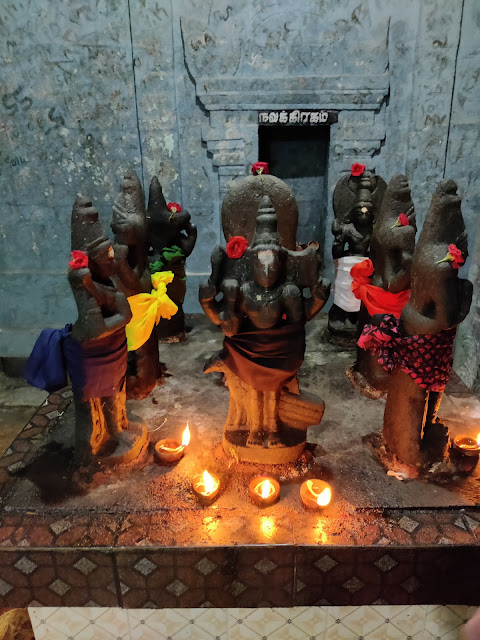Tuesday, June 28, 2022
Sri Agatheeswarar Temple, Kilakondaiyur, Thiruvallur
Sunday, June 12, 2022
Sri Munkudumeeswarar Temple, Pon Valaintha Kalathur (PV Kalathur), Chengalpattu
Monday, June 6, 2022
Sri Thirumakaraleeswarar Temple, Magaral, Kanchipuram
Moolavar: Sri Thirumakaraleeswarar
Amman: Sri Tribuvananayagi Ambal
A padal petra sthalam and one among the 275 padal petra sthalam and It is the 7th of the 32 Tevara Stalams in the Tondai region of South India.
Saint Gnanasambandar has sung 11 verses in his Thevaram inpraise of this Lord. Magaral lies on the Northern banks of the Cheyyar River.
1300 years old temple and the original complex is believed to have been built by Cholas, while the present masonry structure was built during the Vijayanagar Empire Nayak during the 16th century.There are several inscriptions from the period of Kulothunga Chola I (reigned 1070–1120), Sundara Pandiyan and Vijayakanta Kopaletevar, indicating generous gifts to the temple.
Legend goes like this, Lord Brahmma, after performing puja to the Lord in this place, planted a miracle jack tree that would yield one fruit each day. King Rajendra Chola struck by the wonder ordered that one person from each family should carry this fruit on their head to Chidambaram to be offered as nivedhanam to the Lord Natarajar . After the pujas, it was ordered to be sent to the king.
One day it was the turn of a Brahmin boy. He thought that the king ought to have appointed his own men for the job instead of burdening the public. He told the people of the village that he was a boy and could not bear the weight of the fruit and requested them to do the job and offered to take care of their houses till their return.
All the people left the place together to help the boy. The boy thought that this problem will continue only if the tree existed and he simply burnt it. He told the people that the tree caught fire some how and was reduced to ashes. When the king enquired the boy, he said, “You made no facility for us to carry the fruit to Chidamabaram, hence, I burnt it.” The king replied that the boy ought to have demanded the facility and ordered him to be exiled tying his eyes.
The king accompanied the boy while being taken for exile. He found a golden iguana cross his way to an anthill. The king dug the anthill only to see blood woozing out. A divine voice told him that it was Shiva who appeared as the iguana to save the boy and the king had to build a temple for his propitiation. Since Shiva appeared as magaral (Tamil word for Iguana), the place came to be known as Magaral and Shiva is called as Magaraleeswarar.
As per another legend associated with this place, Indra, the king of celestial deities, presented his white elephant to Muruga, the son of Shiva, during his marriage at Thiruparakundram. The divine couple travelled on the elephant. When Vishnu wanted to view the couple, they appeared at Thirumagaral. Also, it is said Lord Murugan came here on Ayravatham elephant to killed a demon called Magaral.
The temple at Magaral is spread over an area of 2 acres (8,100 m2). The main rajagopuram is on the east side with seven tiers and pierces the large rectangular granite walls. The temple tank, Indra Theertha, is located inside the main entrance. The temple is built on an elevated platform and there are two corridors inside the temple. At the main entrance, the sculptures of Ganapathy and Muruga can be found on both the sides
Location: Sri Thirumakaraleeswarar Temple, Magaral, Kancheepuram














































